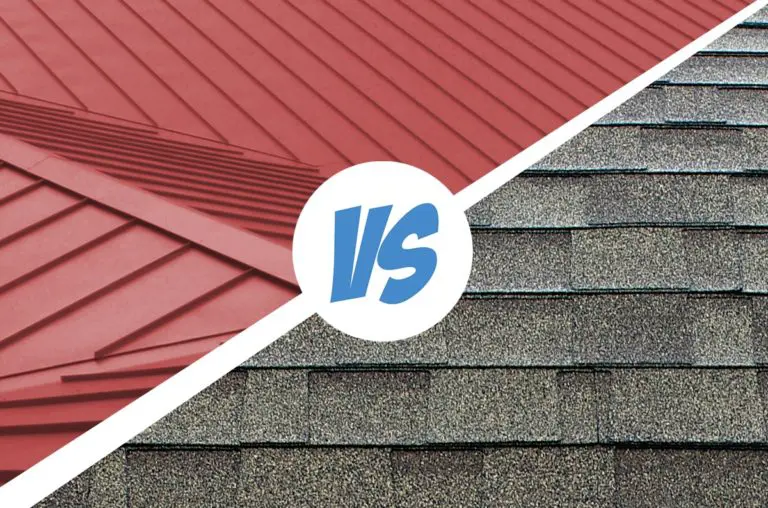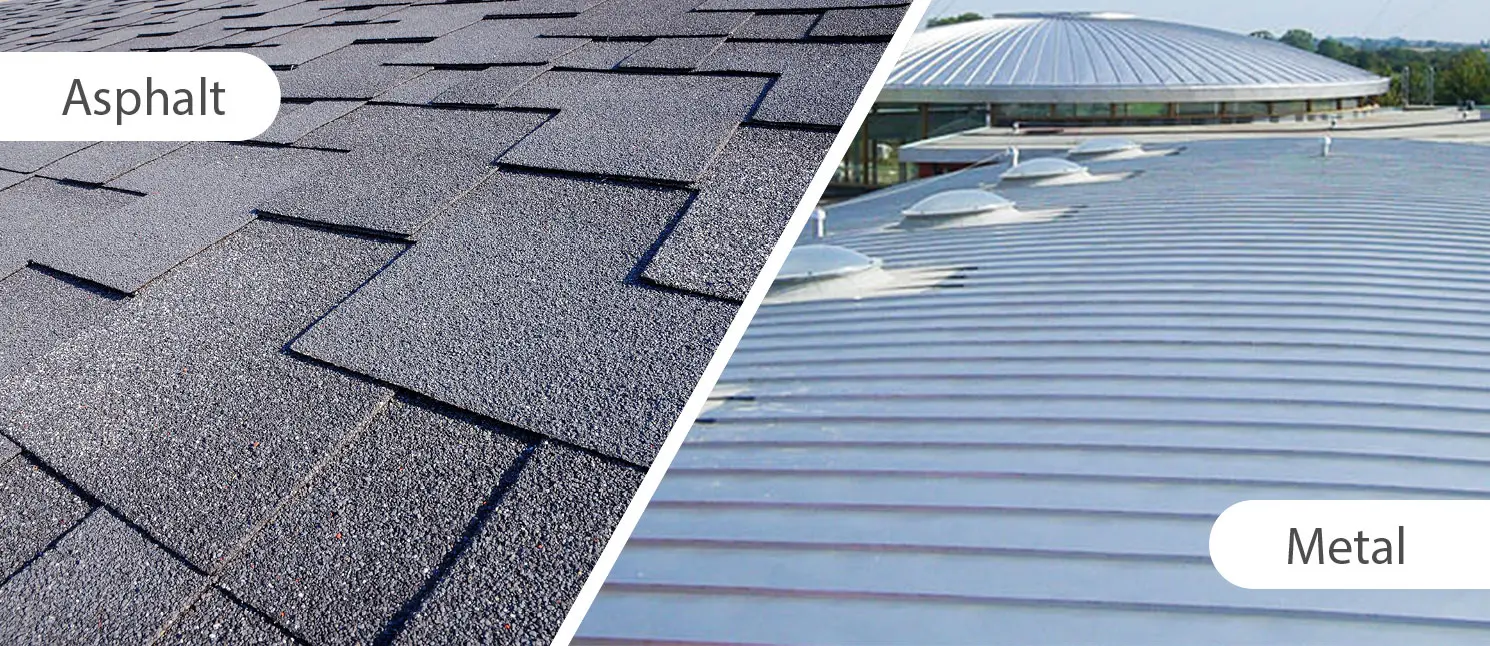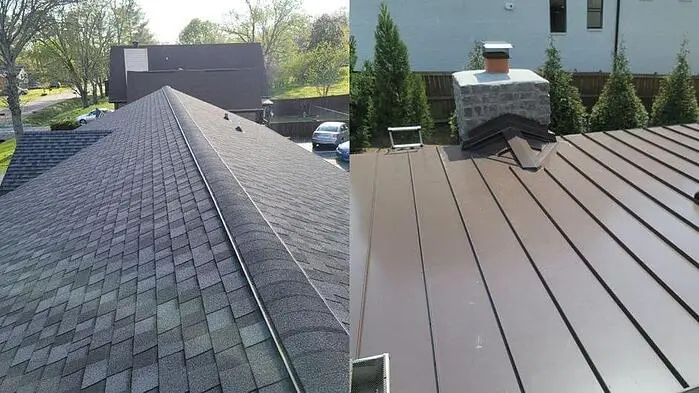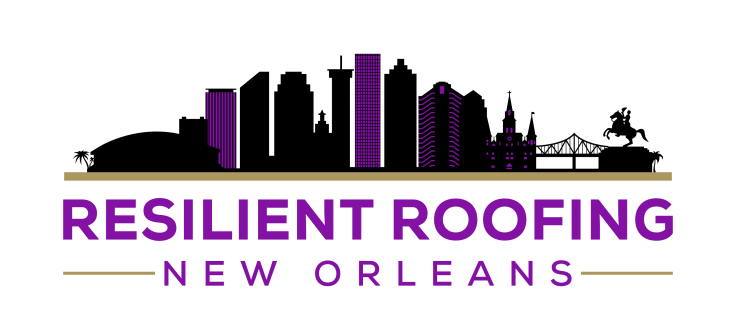If you’re in the market for a new roof, you might be surprised by the wide range of alternatives available. Because of its long history of reliability, affordability, and ease of maintenance, asphalt shingles have long been the most popular roofing material available.
Today though, metal is the most widely sought-after material. It’s worth considering because of its durability, lifespan, and a variety of other forms as we shall discover as the article progresses.
While both materials are excellent choices for roofing needs, one may be more suited to your specific requirements. To make this easy, we compared metal roof vs shingles. Thereby comparing everything from aesthetics to environmental friendliness to assist you in making the best choice for your roof.
Metal roof vs Shingles. Which one is worth it and more suitable for you?
- Metal roofs are considerably more durable.
Because metal roofs can withstand practically whatever the harsh environment throws at them, they generally come with 30- to 50-year guarantees and have a lifespan of 40 to 70 years.
Even still Metal roofs do have some drawbacks.
For example, metal roofs can be dented by heavy rains/winds or fallen branches, as well as by people walking on them incorrectly. The manufacturer should be contacted to discuss security concerns. The Best illustration for this is steel metal which is more durable than copper.
However compared to shingles, they are a better option. It is because shingles have their own set of flaws and a shorter life period. For instance, ice dams can cause cracks in your roof, and temperature swings between day and night can shorten the lifespan of your shingle roof.
A shingle roof’s 15- to 30-year warranty depends on the climate, location, and region in which it’s installed.
- Metal roofing is more eco-friendly
Metal roofs are considered a more sustainable option than asphalt shingles because they are mostly constructed out of recyclable materials and can be recycled again and again. Metal roofs are also more energy-efficient due to their reflective characteristics, which can prevent heat from being transferred to the interior of the home.
Reduce your cooling costs, even more, using specialized paint coats. While metal roofs last for decades, asphalt shingles require more regular replacement, with an estimated 20 billion pounds of old asphalt shingles ending up in U.S. landfills each year.
The fact that asphalt shingles are made from petroleum only serves to further strengthen our reliance on foreign sources of energy.
- The initial investment in a shingle roof is less expensive.
When it comes to shingles vs metal roof interns of costs, shingles are more affordable. Although a metal roof has a longer lifespan, you’ll pay more for it upfront because of the increased cost of installation. Asphalt shingles cost between $100 and $200 per 100 square feet, while metal roofs can cost anywhere from $120 to $900 for 100 square feet (a 10-foot by 10-foot section or “square” of material).
Due to the technical nature of the work involved, the metal installation will cost you an additional fee. When it comes time to replace your roof, you may be able to reclaim some of the cost of a metal roof.
Homes with metal roofs may also be eligible for insurance discounts. Installing a metal roof on your principal residence may potentially qualify you for tax credits. When it comes to monthly utility bills, a metal roof is an excellent choice because it is so efficient.
- Asphalt shingle roofs are easier to install and repair than most metal roof types
Professionals can easily install shingle roofs with only a few hours of training and a few simple tools. If you have the time and money, shingles can be placed within a day or two, sometimes straight over the previous layer.
On the other hand, Installing a metal roof often necessitates the services of a more experienced and knowledgeable contractor. Because the work is more exact and leaves less leeway for error, it will take longer than a shingle installation to complete.
If the existing roof is in good condition, some lightweight metal materials may even be able to be erected directly over the top of it, reducing the overall installation time and cost.
Shingles, on the other hand, make it easier to make repairs than metal roofing. Asphalt sheets are easier to deal with than metal ones. After all, they can be cut down to size and retrofitted to the roof with no effort, even though roofing manufacturers do not suggest do-it-yourself jobs because you may invalidate the guarantee.
And, because of the way metal panels are connected, replacing a single metal roof panel on a metal building is a more difficult task.
What is a metal roof made of?
Metal roofing is made of different types of metal. Choosing the right metal roof for your house or business can be difficult because of the various alternatives available. Each sort of metal roofing material has its own set of advantages, from copper to steel.
- Aluminum Roofing
In coastal areas, aluminum metal roofs are frequently recommended. Compared to other metal roofing materials, aluminum is more resistant to salt corrosion.
Copper and aluminum both have their share of drawbacks. While it can provide better corrosion protection, it is more expensive than aluminum-coated alternatives. Depending on the market, the price of an aluminum roof can vary widely.
Aluminum is commonly utilized in thinner thicknesses than steel because of its lower cost.
- Copper roofing
Copper roofs have been in use for millennia around the world and are considered the ancestor of metal roofing. With proper care, copper can live up to 200 years or longer in the right conditions. Copper roofs can be recycled indefinitely, making them an excellent choice for green roofs.
Copper is one of the most malleable metals, making it one of the quietest roofing options. In contrast, all metal roofs are now installed with adequate substrates and insulation to reduce noise from rain or hail at the same level.
Strong rains will easily dent the copper which lowers the aesthetic value, but it also performs better than a harder metal that, with a large enough hailstone, will puncture rather than simply dent the roof.
- Steel Roofing
Steel is the least expensive metal when compared to the alternatives. As a commodity, steel tends to be more affordable than aluminum, or copper despite its status as a metal. This means that steel is both more inexpensive and more readily available than the other metals on the list.
Galvanized, Galvalume, and Weathering Steel are the three most common forms of Steel Roof.
- Tin Roofing
As a canning material, tin was adopted by rural do-it-yourself individuals who flattened it out and used it as a shingle when other materials were scarce. When aluminum containers replaced tin roof sheets, so did the usage of aluminum as a building material for DIY projects. In current times, the term “tin roofing” refers to either galvanized steel or aluminum rather than the actual tin roof sheets themselves.
This list of metal types isn’t exhaustive however, the word “metal roof” refers to a wide range of materials, including steel, aluminum, and other metals like we’ve listed. The type of material you use will play a significant role in determining which path to go in.
While an aluminum roof is a great choice for coastal areas since it is resistant to corrosion, it has a lower durability rating than other materials. Metal roofing materials made of steel, copper, or zinc are all equally excellent choices.
Cost of metal roof vs shingle
- Shingle roofs are much cheaper
When comparing the cost of metal roofing to that of shingles, shingles come out on top. It is not uncommon for homeowners to choose a cheaper roof at the outset of their budgeting process.
Take note however that roofs may be more cost-effective in the short term if your budget is limited. Shingle roofs may end up costing a lot in the long term. You’ll have to pay for the durability of a metal roof at the time of the installation.
As opposed to asphalt shingles, which typically cost between $100 and $200 per 100 square feet, metal roofs can cost anywhere from $120 to $900 per 100 square feet.
Due to the specialized nature of the procedure of installing metal roofing, the added expense is significant.
Below are a few reasons why metal roofing costs may be an investment in the long run
- Metal roofs can help you save money on your utility bill by reducing the amount of energy needed to heat and cool your home.
- Metal roofs may save you money, in the long run, seeing as they are durable and don’t have to be replaced so often.
- Additionally, homeowners with metal roofs may be eligible for insurance discounts.
- Depending on where you live, installing a metal roof on your principal residence may potentially qualify you for tax incentives.
For all your metal roof installations, roof maintenance, and repair, Contact Resilient Roofing New Orleans. Also, keep in mind that metal roofing is a wise investment because of the protection it offers and the increased value it adds to your home.
Want more info? Contact Resilient Roofing New Orleans About Roofing and Replacement Costs.
Check out one of our locations in New Orleans, Slidell, Kenner, Chalmette, Metairie, River Ridge, Harahan, Elmwood, Jefferson, Harvey, Gretna, Marrero, Westwego, Eden Isle, St Rose, or Meraux!




